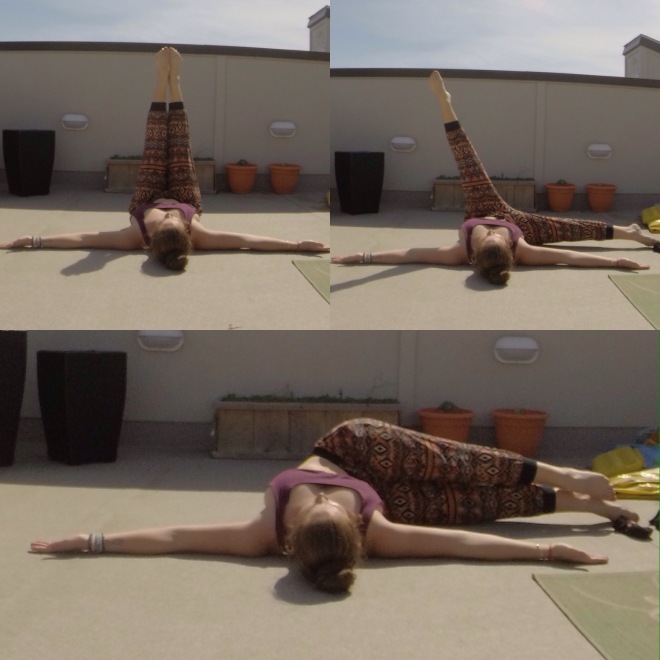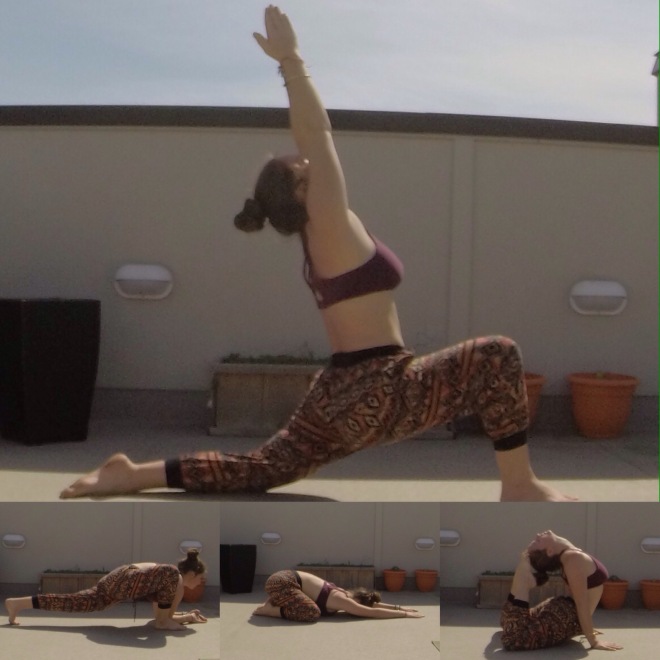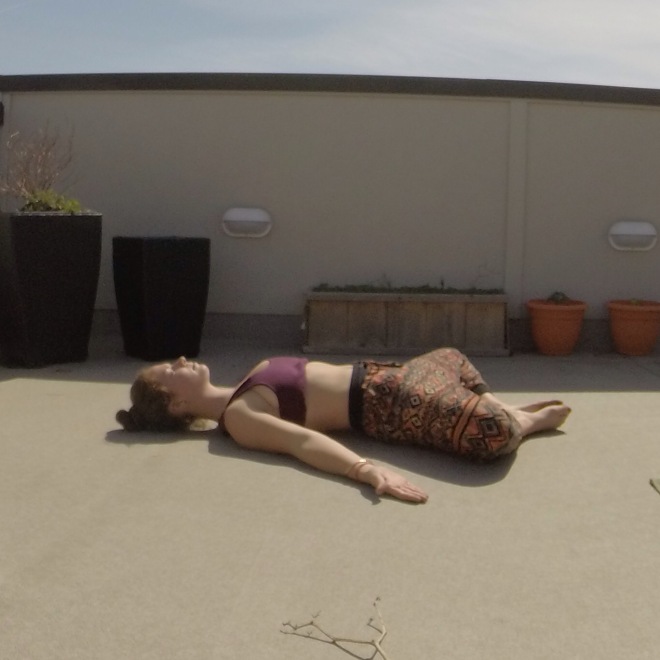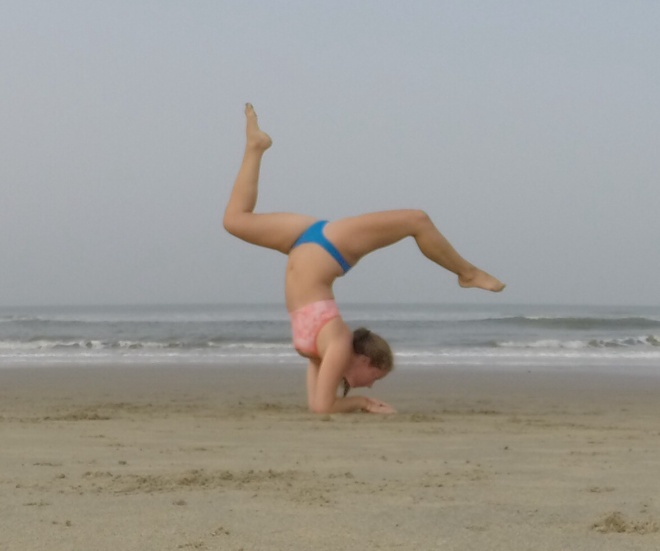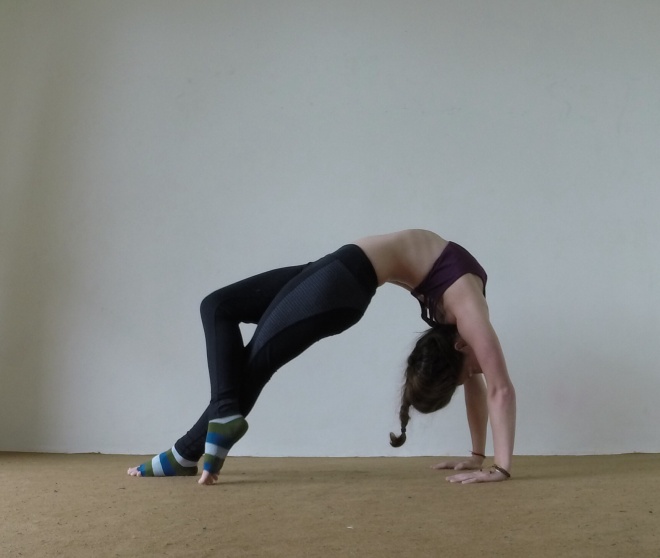Sadhaka Agni, in Ayurvedic medicine, is that inner fire that helps one digest and process emotions. It is a connection between your heart and head. What makes us aware of our feelings, accept, and process them in a graceful and efficient way. When this is unbalanced, feelings of depression and anxiety can surface.
I was recently asked to create a natural treatment plan for a friend coping with depression and anxiety. Yoga is an excellent way to both treat and prevent depression, because it helps us to find balance, both physically and spiritually. Life is chaotic and we often forget that taking care of ourselves goes far beneath the surface.
We have to feed our souls.
Self compassion.
Self forgiveness.
Self love.
The following yoga asanas are all beneficial for people coping with depression and anxiety:
- Head-to-Knee Forward Bend (Janu Sirsasana). This pose stimulates the liver and kidneys, is calming for the mind and relieves depression.
- Camel (Ustrasana).This hip and heart opening posture brings emotions up and out of the body for a great emotional detox.
- Forward fold (Uttanasana). B.K.S. Iyengar said, “Any depression felt in the mind is removed if one holds the pose (Uttanasana) for two minutes or more.”
- Supported Headstand (Salamba Sirsasana). Referred to as the “king of all asanas.” Inversions, like headstands turn your body and mood upside down and provides your brain with fresh oxygenated blood.

In addition to yoga, Ayurvedic medicine and Aromatherapy are very beneficial for depression and anxiety.
I created a set of essential oil blends that can be used throughout the day to help relax, uplift, and energize.
Morning Mist:
Rose and Chamomile water, lemongrass oil blend. Spritz on face in the morning as a toner.
🌹 Rosewater is a great facial toner, balancing skins pH, providing anti oxidant, anti bacterial, anti aging and moisturizing properties. Helps alleviate anxiety
🌹Chamomile water soothes and calms the mind. Tones, brightens, and moisturizes skin. Also lightens under eye circles.
🌹Lemongrass oil is uplifting, improving mood and infusing the body with energy, making is a perfect AM staple.
Anytime Tranquility Oil Blend:
Bergamot, Lavender, and Frankincense
Apply to wrists and pressure points on the body.
🌸 Bergamot oil helps reduce cortisone response to stress.
🌸 Frankincense oil provides a calming and tranquil energy. It is spiritually grounding and can be helpful during meditation.
🌸 Lavender oil is well known for its relaxing properties. It helps to reduce nervous tension and stress, and has natural cleansing properties.
Nighttime Oil Blend:
Lavender, Vetiver, Clary Sage, and Ylang Ylang
🌱Vetiver oil has calming properties that help dispel anger and irritability. It can help with insomnia, due to its tranquil, grounding, and reassuring energy.
🌱 Clary sage oil is an anti depressant, and helps to induce euphoria. Sage has cleansing properties, and applying it nightly can provide energetic cleansing.
🌱Ylang Ylang oil is great for increasing libido (making it a good nighttime essential😻) Many people experiencing depression and anxiety have a difficult time maintaining a healthy sex life, oftentimes not having much libido, so this oil can be very helpful either applied topically to pressure points or diffused throughout the room.
Ylang Ylang also reduces fearfulness, and increases courage and optimism.
Ayurvedic herbs for depression and anxiety (Organic India is a great brand) These can all be taken as daily supplements, try picking one or two and see which work best for you over a 30 day trial period.
Arjuna
Ashwagandha
Clove
Amla
Shatavari
Brahmi
Vacha
Cardamom
Kava Kava extract is a great remedy when faced with stronger feelings of sadness or anxiety. Think of it as nature’s Xanax. I recommend using the liquid form, sold at most health food stores. Used on an as needed basis.
Yogic Philosophy in Your Daily Life:
Creating rituals for yourself is a great way to show self love. And self love is essential in manifesting happiness. The following are great, simple, and quick rituals you can slip into your daily routine:
1. Start your day with a short reading to cultivate positivity. I really enjoy Meditations from the Mat, by Rolfe Gates and The Power of Now, by Eckhart Tolle
2. Instead of an alcoholic nightcap to relax, switch to an herbal tea. Yogi bedtime tea is 👌🏼
3. Create a mantra. This is a short affirmation to repeat to yourself throughout the day, setting a positive mindset and promoting self love. Examples:
I am beautiful.
I am enough.
I am loved.
I am powerful.
I am in control of my life.
You can repeat the same one daily or switch it up depending on your mood! This little girl is def a yogi in the making https://m.youtube.com/watch?v=qR3rK0kZFkg
4. Practice five sun salutations in the morning, thanking the sun and pacha mama for creating life and light✨ Showing gratitude can uplift our spirits, create humility, and remind us of the good in our lives.
5. Start a journal. You can either fill it with your thoughts and feelings, or I like to fill mine with poetry, quotes, and inspiring things I see, read or hear throughout the day. Whenever I’m feeling down, I like to read through my journal and be reminded of thoughts I find uplifting.
6. Absorb prana from nature. We are all a part of nature, and we have to remain connected to its elements; walk in the soil of the earth, feel the heat and light of the sun, bathe in nature’s water, and breathe in the air from the trees. Make an effort to connect with nature every day.
7. Meditate. Try the “smile inside” technique of meditating. Sitting comfortably, close your eyes and from head to toe, visualize positive waves of energy being absorbed into each part of your body. Allow yourself to feel ignited within, and it will resonate outwards the more you practice. Start at 15 minutes twice daily, and increase to 30 minutes as you become more comfortable.
There is no magic potion to cure depression or anxiety. But, creating a more loving environment for yourself, from within, is a great first step towards Samadhi. Bliss.🙏🏼












